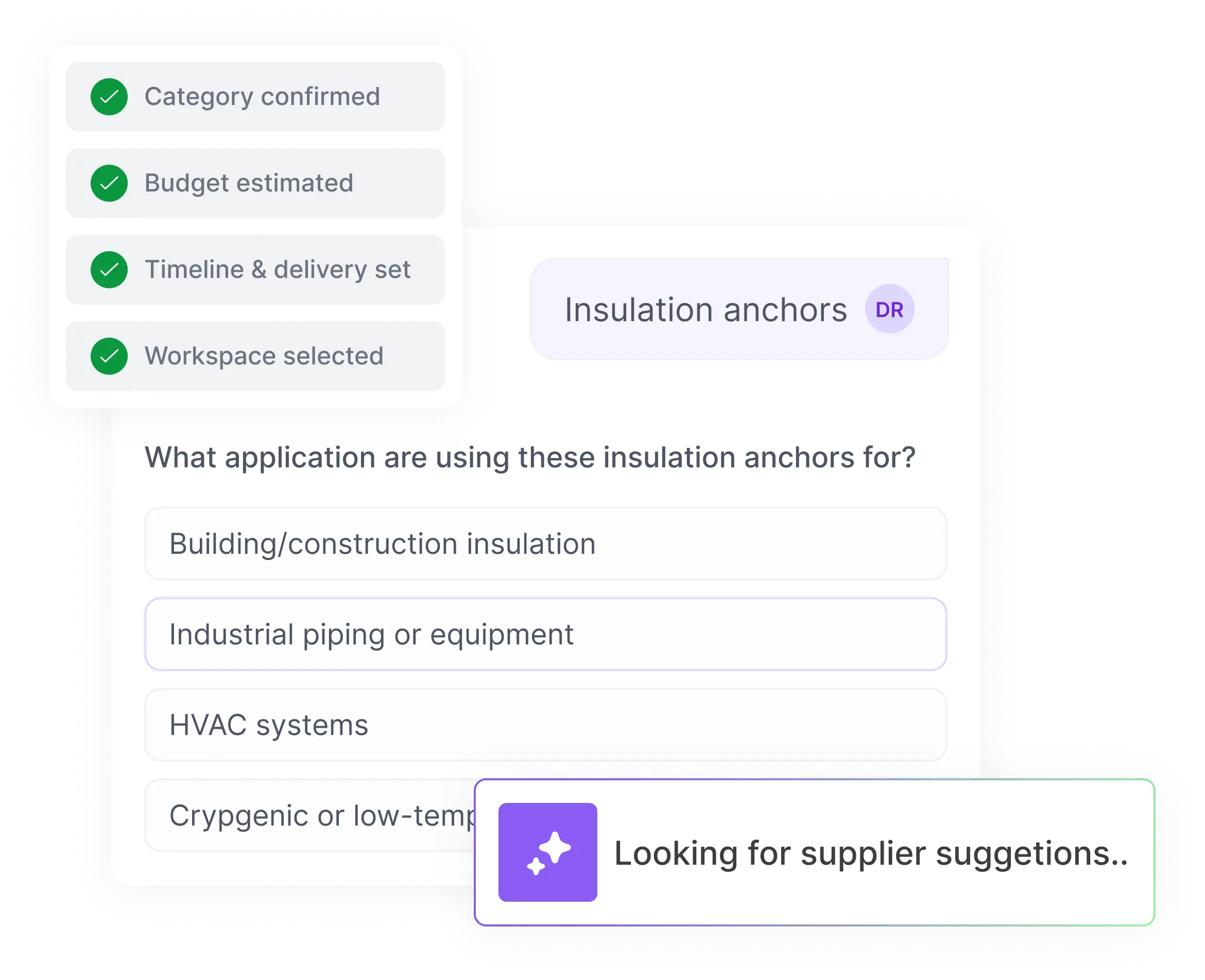Stop chasing emails, clarifying requests, and losing visibility. Give every stakeholder one guided entry point, one data model, and one version of truth — so procurement can move faster with less effort.
Contact Us
Ensure every request starts with the right information: Guided intake captures all required details — scope, budget, specifications, risk indicators, and category-specific data — so procurement receives requests that are complete and ready for action. This minimizes clarification cycles and frees your team from operational interruptions.
Shorten early-stage cycle times with automated validation: Intelligent checks prevent incomplete or misaligned requests before they enter the workflow. Missing fields, incorrect categories, or policy missteps are flagged instantly — preventing delays later and accelerating sourcing, contracting, or supplier onboarding readiness.


Remove friction with a single front door:
Employees no longer need to guess which form, contact, or workflow applies. A unified intake experience directs every request along the correct path based on spend level, category, urgency, and risk — reducing confusion and preventing stalled requests.
Strengthen compliance through intuitive navigation: When users understand exactly what to do, adherence naturally increases. Automated routing applies approval flows, risk checks, and governance rules in the background, ensuring compliance without adding complexity for requesters or procurement teams.
Standardize critical information before it enters your workflows: Intake is the moment where procurement data is created. Mercanis ensures consistency by applying categorizations, supplier information, documentation requirements, and taxonomy standards at the source — ensuring accurate, uniform data across all modules.
Enhance visibility and decision-making with unified information: When intake data is consistent and connected, procurement gains real-time insights into demand, budget impact, cycle times, and approval status. This enables faster, more informed decisions and reduces manual reconciliation across systems.














